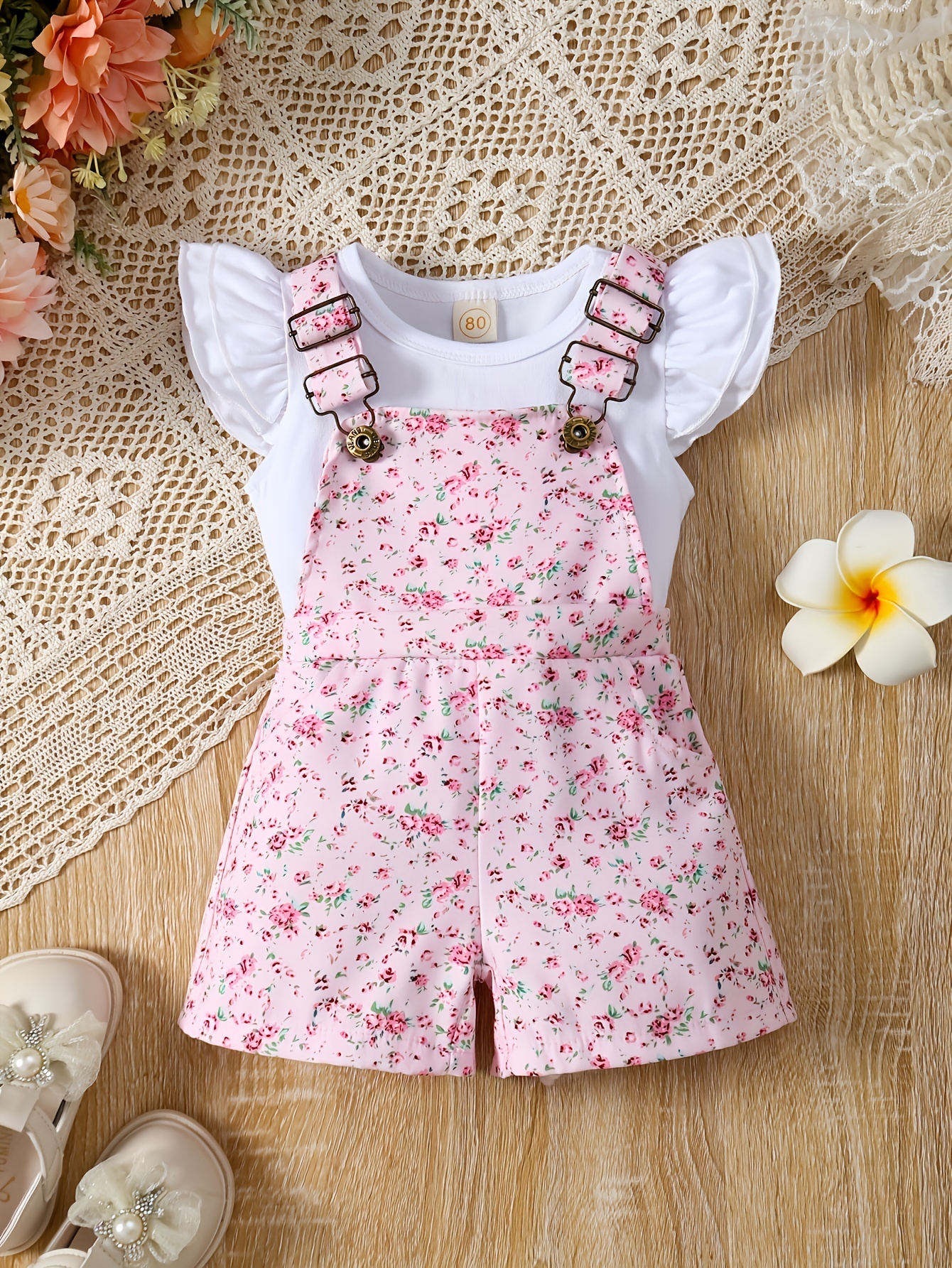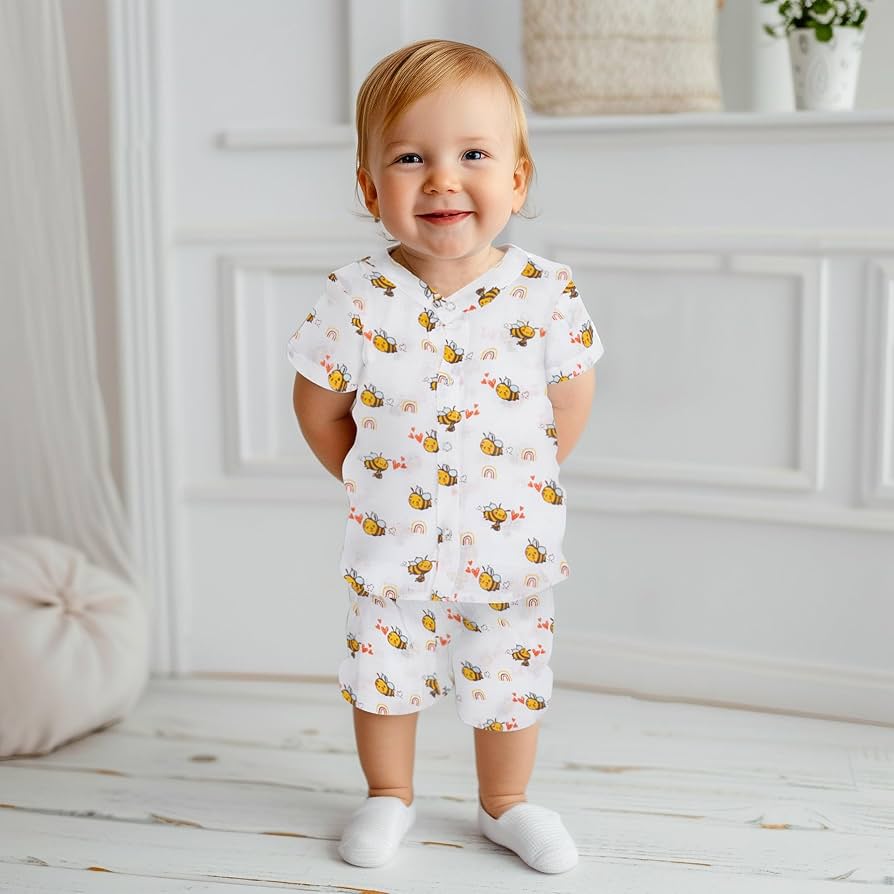Blz baby clothes support practical wardrobe choices
Everything About Child Clothing: Recognizing the Advantages of Comfortable Fabrics
Selecting suitable fabrics for infant clothes is crucial for their comfort and overall advancement. Soft, breathable materials like cotton and bamboo are preferred for their mild touch on sensitive skin. Additionally, the fit of baby apparel plays a notable duty in enabling motion. Understanding these factors can greatly influence a child's experience in their onset. What factors to consider should moms and dads maintain in mind when selecting the most effective options for their children?
The Importance of Comfort in Child Clothing
When choosing child garments, convenience arises as an important factor that can not be ignored. Babies have fragile skin and are particularly delicate to pain, which can result in fussiness and rest disruptions. The best garments enables for ease of movement, crucial for their natural advancement as they begin to discover their environments. Moms and dads usually focus on soft joints, adjustable functions, and breathable textiles to assure their babies continue to be comfy throughout the day.
Moreover, garments that is very easy to put on and remove simplifies clothing regimens, minimizing stress for both parents and infants. The significance of convenience extends past the physical; it adds to an infant's general well-being and happiness. Selecting garments that prioritize comfort fosters a favorable environment for growth and exploration - Blz baby clothes. Inevitably, understanding the significance of comfort in child clothes can lead to better selections that sustain an infant's requirements during these developmental months
Comprehending Fabric Types: Cotton, Bamboo, and Extra
Selecting the appropriate fabric for child clothes plays a significant function in guaranteeing convenience. Numerous fabric kinds provide distinct features that can affect a baby's experience. Cotton, for example, is a popular selection due to its breathability and softness, making it mild against fragile skin. It is additionally sturdy and very easy to clean, including to its appeal for moms and dads.
Bamboo textile is another superb choice, understood for its eco-friendliness and moisture-wicking residential properties. It helps regulate temperature level and maintains babies completely dry, which can be especially beneficial during warmer months. Additionally, bamboo is naturally hypoallergenic, minimizing the risk of inflammation for delicate skin.
Various other fabrics, such as linen and modal, additionally contribute distinct advantages. Linen is lightweight and breathable, while modal is soft and immune to reducing. Recognizing these textile types can aid moms and dads make educated choices for their infant's wardrobe, promoting comfort and wellness.
The Benefits of Soft Cotton for Child Skin
Soft cotton is frequently hailed as the suitable material for child garments, mainly due to its gentle touch against delicate skin. This all-natural fiber is hypoallergenic, making it a safe option for infants susceptible to allergic reactions or breakouts. Unlike artificial materials, soft cotton allows for better air circulation, minimizing irritability and discomfort throughout wear. Its moisture-wicking residential or commercial properties aid to maintain infants dry, which is essential for stopping baby diaper breakout and other skin problems.
Furthermore, soft cotton is highly sturdy and can withstand constant cleaning, making certain that garments remain in excellent condition with time. The textile's breathability adds to overall convenience, enabling children to move freely without limitation. In addition, its gentleness enhances with each laundry, improving the experience for both parents and their little ones - Blz baby clothes. Overall, soft cotton provides an excellent combination of comfort, safety and security, and practicality for baby clothing, making it a preferred choice amongst caretakers
Exploring Breathable Fabrics for Temperature Level Guideline
Breathable materials play an essential duty in regulating an infant's body temperature, complementing the comfort supplied by soft cotton. These materials enable air to distribute, preventing overheating during warmer months and keeping heat in colder conditions. Fabrics such as bed linen, bamboo, and moisture-wicking blends are particularly efficient in maintaining an optimal microclimate for babies.
Bed linen, known for its all-natural breathability, helps wick away moisture, keeping babies completely dry and comfy. Bamboo, on the various other hand, supplies a soft structure in addition to exceptional thermoregulating residential properties, making it a popular choice for sleepwear.
Moisture-wicking blends attract sweat far from the skin, making certain infants remain comfy even throughout active play. Picking garments made from breathable textiles not only enhances the baby's comfort yet also adds to overall wellness, making it an important factor to consider for caretakers when picking child clothing.
Artificial vs. natural Products: What to Choose?
When selecting child garments, the selection in between artificial and natural products raises essential factors to consider. Factors such as breathability, comfort, toughness, and environmental impact play a crucial role in this decision. Moms and dads have to consider these elements to guarantee the very best alternatives for their child's demands and the world's wellness.
Breathability and Comfort
Choosing the appropriate products for child clothing significantly influences a youngster's convenience and general health. Breathability is a necessary aspect in ensuring that babies continue to be comfortable throughout the day. All-natural fabrics, such as cotton and linen, are recognized for their remarkable breathability, enabling air flow and moisture absorption. This assists regulate a child's body temperature, keeping them cool in warm problems. On the other hand, artificial materials, while often even more economical and readily available in various designs, may trap warmth and wetness, potentially creating pain. Parents must consider the climate and their infant's skin level of sensitivity when selecting textiles. Ultimately, focusing on breathable, soft products will certainly improve a child's convenience and support healthy and balanced skin advancement.
Sturdiness and Longevity
While comfort is essential, the sturdiness and longevity of infant clothing are just as vital variables for parents to take into consideration. When selecting between natural and synthetic materials, moms and dads must weigh the benefits of each. All-natural textiles like cotton and bed linen are usually commended for their softness and breathability, making them comfy against a child's delicate skin. Nevertheless, they may break much faster, particularly with regular cleaning. important link On the various other hand, synthetic materials such as polyester and nylon can supply improved resilience and resistance to reducing or fading, making them a sensible selection for energetic babies. Ultimately, picking the ideal textile involves stabilizing convenience with the demand for garments that can hold up against the roughness of everyday damage, ensuring they last through numerous uses.
Ecological Effect Factors To Consider
The environmental impact of infant garments is increasingly ending up being a substantial factor to consider for moms and dads. When choosing in between artificial and natural materials, moms and dads usually weigh the environmental footprint of each option. All-natural fibers, such as organic cotton and bamboo, are eco-friendly and usually created with fewer damaging chemicals, making them extra sustainable selections. On the other hand, synthetic products like polyester and nylon are obtained from oil, adding to contamination and microplastics in seas. However, artificial textiles can supply durability and moisture-wicking properties, which might be beneficial for active infants. Ultimately, parents have to stabilize ecological interest in the useful requirements of their children, considering aspects such as convenience, treatment, and long life while going for green choices in their infant's wardrobe.
Effect of Fabric on Child's Mood and Health
The selection of textile in infant apparel significantly affects a youngster's state of mind and general health. Comfortable and breathable products can boost a child's convenience, while sensory-sensitive babies may respond adversely to rough or artificial textiles. Recognizing these variables assists caretakers choose appropriate clothing that sustains a favorable emotional atmosphere.
Textile Breathability and Comfort
Choosing breathable textiles for child garments is vital, as it considerably affects a child's convenience and total state of mind. Breathable materials, such as cotton and bed linen, permit air blood circulation, assisting to manage the infant's body temperature level. This is especially important to avoid overheating, which can bring about impatience and restlessness. They are a lot more most likely to be calm and content when infants feel comfy in their clothes. In contrast, non-breathable fabrics can catch heat and wetness, triggering pain and possible skin irritations. Prioritizing breathable choices not only improves physical health however additionally contributes to a more favorable emotion. Choosing the appropriate textile is crucial for promoting a supporting environment that sustains a child's development and happiness.

Sensory Level Of Sensitivity Considerations
Material selections not just influence breathability yet additionally play a critical duty in a baby's sensory experience. Children are specifically sensitive to textures, and the appropriate fabric can improve their convenience and overall state of mind. Soft, natural materials like cotton and bamboo are commonly chosen, as they give a gentle touch versus the skin, lessening irritability. Conversely, artificial or rough fabrics might bring about pain, prompting fussiness or distress. This level of sensitivity can influence just how a baby interacts with their atmosphere. Parents require to be conscious of fabric choice, as it can considerably influence a child's psychological health. Eventually, choosing comfy materials is important for promoting a favorable sensory experience, adding to a happy and satisfied child.
Tips for Selecting the Finest Child Clothing for Convenience
When selecting baby clothes for comfort, moms and dads ought to focus on soft, breathable materials to ensure their child remains cozy throughout the day. Fabrics like cotton and bamboo are excellent choices, as they permit air flow and lessen irritation against delicate skin.
In addition, moms and dads need to think about the fit of the garments; baggy garments offer enough space for movement, making certain that babies can check out without limitation.

Moms and dads ought to additionally think about the environment; layering options are beneficial for changing temperature levels, enabling easy change.
Ultimately, going with easy-to-use fasteners, such as breaks or zippers, can simplify clothing and baby diaper adjustments, further improving comfort. By concentrating on these elements, parents can create a comfy wardrobe that supports their kid's well-being and growth.
Often Asked Inquiries
How Frequently Should I Wash My Child's Clothes?
Specialists advise washing a child's clothes after every wear, especially if they come to be stained. For delicate skin, making use of gentle cleaning agents and staying clear of material softeners is anchor advisable to preserve material integrity and reduce irritation risks.
What Sizes Should I Buy for My Growing Baby?
For a growing infant, it is a good idea to acquire sizes that accommodate their current age and weight, choosing a dimension bigger when in uncertainty. This assures comfort and long life as they remain to expand.
Exist Infant Garments Suitable for Delicate Skin?
Yes, there are child garments made especially for delicate skin. These garments generally feature soft, breathable materials like natural cotton and avoid rough dyes or chemicals, ensuring convenience and minimizing the risk of irritability for fragile skin.
Can Child Clothes Be Securely Dried Out in a Clothes dryer?
Child clothing can usually be securely dried in a clothes dryer, however it is crucial to inspect care tags. Making use of a low heat setup helps prevent shrinkage and preserves the stability of the textile.
Just How Can I Tell if Child Garments Fit Appropriately?
To identify proper fit for infant clothing, one need to examine for snugness without restricting movement, assurance joints line up with shoulders and crotch, and verify that apparel enables for easy dressing and slipping off without excessive rigidity. Blz baby clothes.
Picking proper textiles for child garments is essential for their convenience and total advancement. Choosing the right fabric for child garments plays a significant function in making certain convenience. Breathable fabrics play a necessary role in regulating a baby's body temperature, enhancing the convenience provided by soft cotton. Breathable and comfortable materials can improve a child's convenience, while sensory-sensitive infants might react negatively to rough or synthetic fabrics. Choosing breathable materials for infant clothing is vital, as it substantially affects a child's convenience and total state of mind.